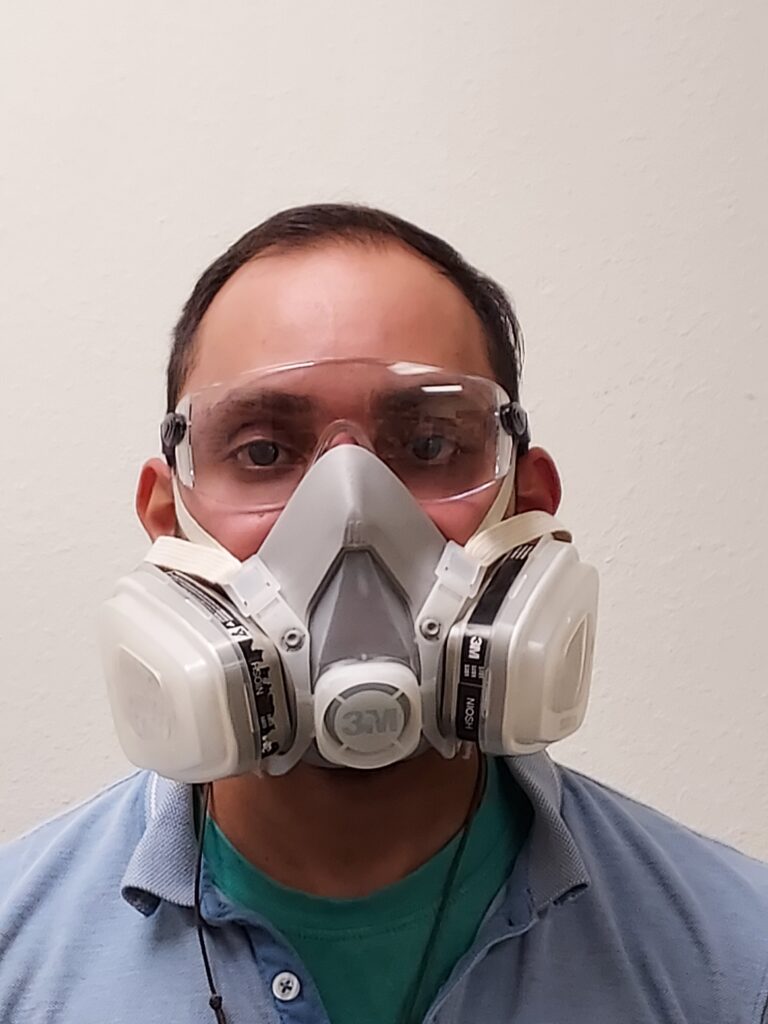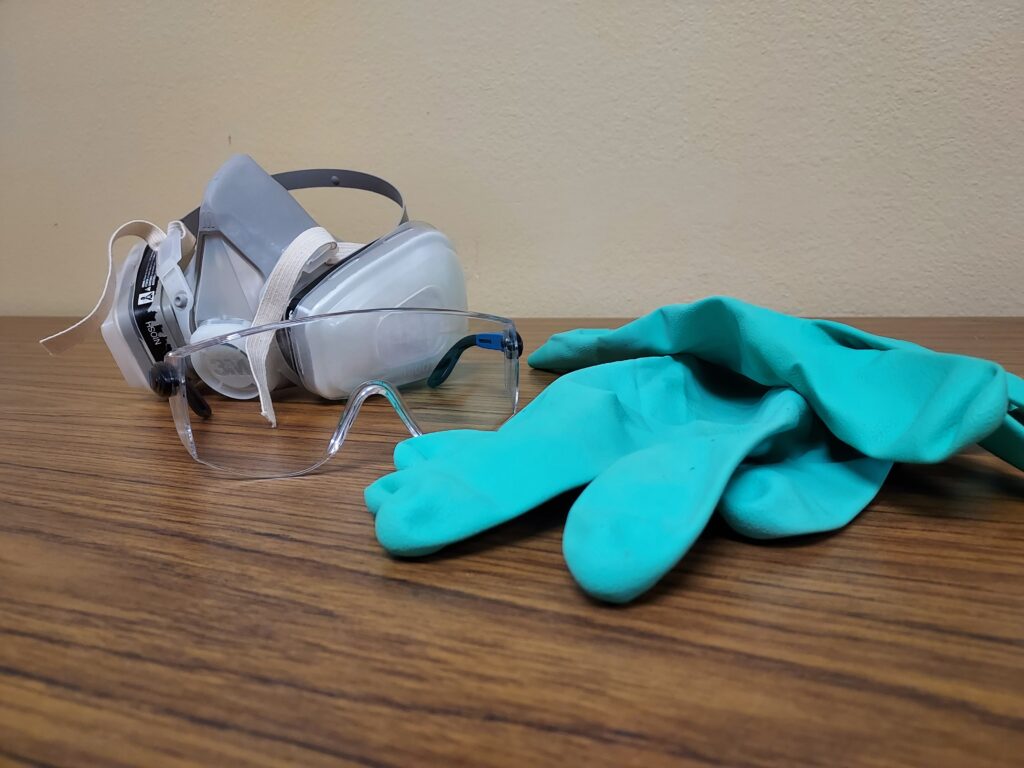by LUIS O. RODRIGUEZ ROSADO
Pesticides are a common effective method for pest control in farming and ranching. On the other hand, pesticides are chemicals designed to kill living organisms, which means applicators must be careful when using them to avoid unnecessary exposure to humans, domestic or wild animals, plant life, and the environment.
The Label Is the Law
Every pesticide will have a label. This is the printed information attached to the pesticide container. The label represents the research, development, and registration procedures that a pesticide must undergo before reaching the consumer at the market. The pesticide label is the law, and applicators must follow its instructions. The label should be considered the main source of information on how to use the product correctly, legally, and safely.
What Is Personal Protective Equipment?
On the label, you will find information about the minimum PPE needed when applying a specific pesticide. The PPE is designed to minimize pesticide exposure to the applicator. Applicators can always wear more PPE if they wish, but they should never wear less than what is listed on the label. On the other hand, the more PPE applicators wear, the hotter they’re going to feel. In Florida, especially in summer, applicators must have good judgment when wearing more PPE than listed on the label. Although, no matter how hot it is, as mentioned before, an applicator must always wear the minimum amount of PPE listed on the label.
The 4 Routes of Exposure
Appropriate use of PPE is important because it protects applicators by minimizing pesticide exposure, specifically through the 4 routes of exposure:
- Dermal: Pesticide exposure through the skin. 97% of pesticide exposure occurs as dermal exposure, specifically through the hands and forearms, since those are the parts of the body that are most exposed when doing applications.
- Ingestion: Pesticide exposure when someone swallows the chemical. The majority of the time, this happens because of an accident or carelessness, when applicators do not wash their hands appropriately and swallow pesticide particles that are still present on their hands.
- Inhalation: Pesticide exposure when applicators breathe pesticide fumes that are harmful to their health. If the pesticide has a high risk of being inhaled, most likely a protective mask or respirator must be worn during its application, and it will be listed on the label.
- Ocular: Pesticide exposure when the pesticide reaches the eyes of the applicator.
Types of PPE
There are different types of PPE, each one designed to protect a specific part of the human body. Depending on the pesticide in use, applicators must use a specific type or combination of PPE following label instructions.
- Dermal Protection: The use of long sleeves, long pants, gloves, and overhead protection are usually used to protect the skin and avoid direct contact with pesticides. It is important to know that not all materials are appropriate as PPE. Ordinary shirts, pants, shoes, cotton gloves, cotton caps, and any other absorbent material should not be used as PPE. Any PPE used to protect the skin must be chemical resistant. A misconception in the public is the belief that waterproof equipment is equivalent to chemical resistance. Most of the PPE are a combination of chemical-resistant and waterproof materials. Always read the pesticide label to know what materials are appropriate when handling a specific pesticide. Certain pesticides will require specific materials such as polyvinyl chloride, butyl rubber, barrier laminate, or nitrile rubber. PPE skin protection includes chemical resistance aprons, gloves, safari hats, hazard suits, and coveralls.
- Ocular protection: The eyes are sensitive and a very absorbent part of the human body, which means pesticides can be absorbed rapidly through the eyes. The use of protective goggles, face shields, and protective glasses are examples of PPE design for the eyes. Normal-day glasses, sunglasses, or prescription glasses are not suitable PPE since they do not protect the side of the eyes of the applicator.
- Respiratory tract protection: Respirators protect applicators from breathing air that may be contaminated by pesticides. If an applicator needs to use a respirator, the label of the product will provide specifications on the PPE information box. The label will also specify what type of respirator is required; not all respirators filter the same particles. The National Institute of Occupational Safety Health (NIOSH) is a federal agency responsible for testing and certifying respirators in conjunction with pesticides. A fit test is required by law at least once a year to make sure applicators have a tight-fitting seal with no leakages each time they use a respirator. Even though a fit test is legally required just once per year, it is recommended to perform the test several times per year, especially if the applicator has had a significant change in the structure of their face including weight gain, weight loss, or facial hair removal. If applicators believe that there is not a tight-fitting seal while doing an application, they should move immediately out of the application site and if they were exposed to the pesticide, seek the appropriate medical treatment.


Legal aspects of PPE
As mentioned, PPE are designed to minimize pesticide exposure to the human body. They are also required by law. If applicators do not follow label instructions, they are breaking the law. An employer must provide the appropriate PPE to their employees as well as any important information regarding the pesticide such as Safety Data Sheets (SDS). No employer can refuse to provide the appropriate PPE needed for a specific pesticide application. At the same time, employees must use the PPE according to label instructions, and if they refuse, they could have repercussions from their employers and to their health.
For more information contact your local Extension Agent or access the “Ask IFAS” publication called:
“PERSONAL PROTECTIVE EQUIPMENT FOR HANDLING PESTICIDES”
“PESTICIDE SAFETY AND PERSONAL PROTECTIVE EQUIPMENT FOR CITRUS GROVE WORKERS”
Luis O. Rodriguez Rosado is a Small Farms and Pesticide Education Extension Agent for UF/IFAS Extension Polk County. He can be reached at lrodriguezrosado@ufl.edu, 863-519-1049, and http://sfyl.ifas.ufl.edu/polk/

